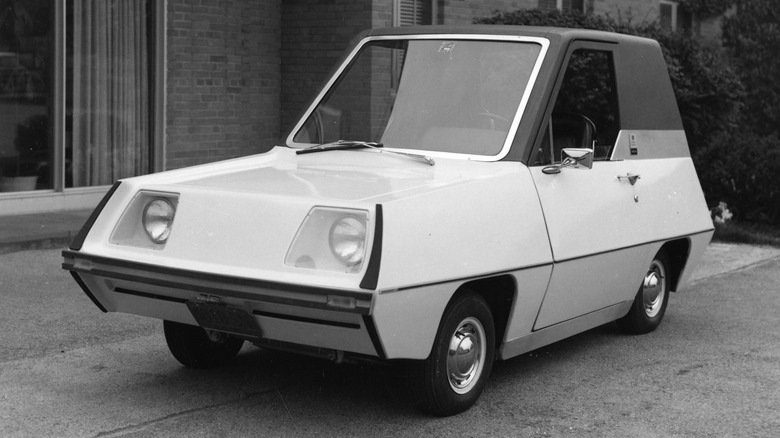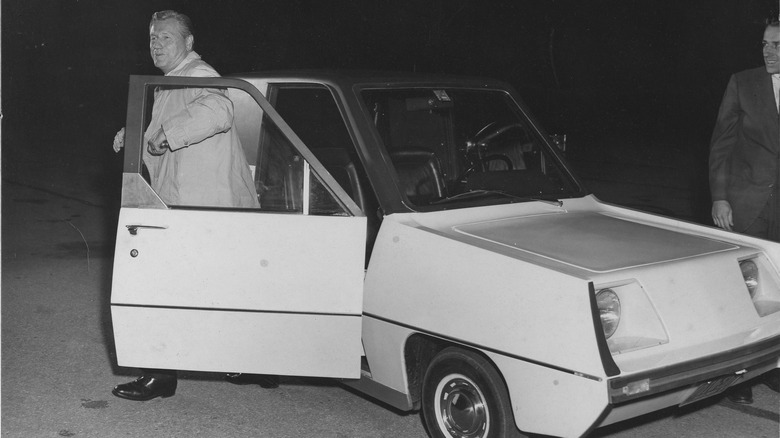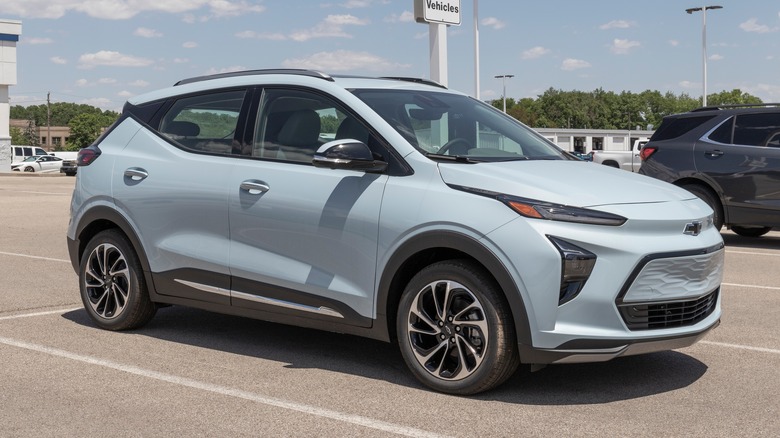This Early Electric Car Built By GE Proved That EVs Still Had A Long Way To Go
We could credit American EV pioneer Tesla for kickstarting the mainstream modern electric car revolution. However, inventors and scientists have dabbled with electric-driven carriages since the late 1800s. In 1884, English inventor Thomas Parker created an electric car with a steam generator to recharge his EV's lead-acid batteries.
By 1899, a torpedo-shaped EV called the La Jamais Contente ("The Never Satisfied") became the first roadgoing vehicle to speed past 62 mph (100 kph). In that same year, American electrical contractor Baker revealed its first EV, the Baker Imperial Roundabout, which became the first car of Thomas Edison.
As Henry Ford mass-produced the Model T in 1908, the internal combustion engine suddenly stole the spotlight from electric cars. It wasn't until the 1970s energy crisis that electric vehicles became a viable solution to curb pollution and the worrying effects of global warming.
In 1967, scientists and engineers of the New Business Development Operation (NBDO) unveiled the preliminary testing results of an "experimental electric vehicle" called the Delta. Developed in cooperation with General Electric (GE), the Delta had to overcome similar hurdles that modern EV makers face today.
GE Delta EV: Limited by battery technology
The Delta is not what you would call a nice-looking car. It has three doors, 2+2 seating, molded windows, a magnesium frame, and a fiberglass-polyester body. It has a single DC motor and a front transaxle underneath its hideous facade, and about 40% of its 2,300-pound curb weight is for the battery pack — a unique blend of lead-acid and nickel-cadmium. Moreover, it could go 100-120 miles per full charge, but only if it went 30 to 35 mph on level terrain. Otherwise, it could reach a 55 mph top speed.
In an archived PDF file from the Museum of Innovation & Science, the NBDO's vice president of R&D, Dr. Arthur M. Bueche, spilled more about the Delta EV's speed and driving range. "From a standpoint of quietness, cleanliness, convenience, economy, and safety, electric vehicles offer many potential advantages," said Dr. Bueche. "But there are still many unsolved problems, and a great deal of research and development remains to be done."
The driving range suffers when driven at higher speeds (55 mph), and then there's the issue of battery density and the recharging times. "We need to pack more kilowatt hours of electricity into each pound of battery and still keep costs under control," added Dr. Bueche.
The folks at GE had a three-electrode battery that recharges in under an hour, but it's expensive and is mainly for space and defense purposes. The Delta utilized a proprietary battery that recharges in eight hours via a standard 110V outlet.
If the price is right
Dr. Bueche and his team balanced the cost, range, speed, efficiency, and passenger capacity in developing the Delta EV. "You need an optimum combination for the vehicle to be competitive," said Dr. Bueche. "Our rough estimates of what our test vehicle might cost is more than what people now pay for a full-sized, full-powered luxury sedan."
Compounding the equation is the low speed and range limitations of the Delta EV, making it unable to keep up with internal combustion cars. Adding more range means adding more batteries, but according to Dr. Bueche, it will drive the costs higher while adding unnecessary heft — a factor detrimental to efficiency and handling in an EV.
Doesn't this sound familiar? Sure, we have Tesla cars that could go 396 to 405 miles on a single full charge, but you'll need to spend $89,000 to $109,000 to enjoy the privilege. On the other hand, the Chevy Bolt EV could go 249 miles with its sub-$26,000 base price, but it won't get your heart racing with its 6.5-second 0-60 time. The technology is getting there, but battery technology needs to improve if modern EVs wish to be as close to internal combustion cars in terms of driving feel, range, and efficiency.


